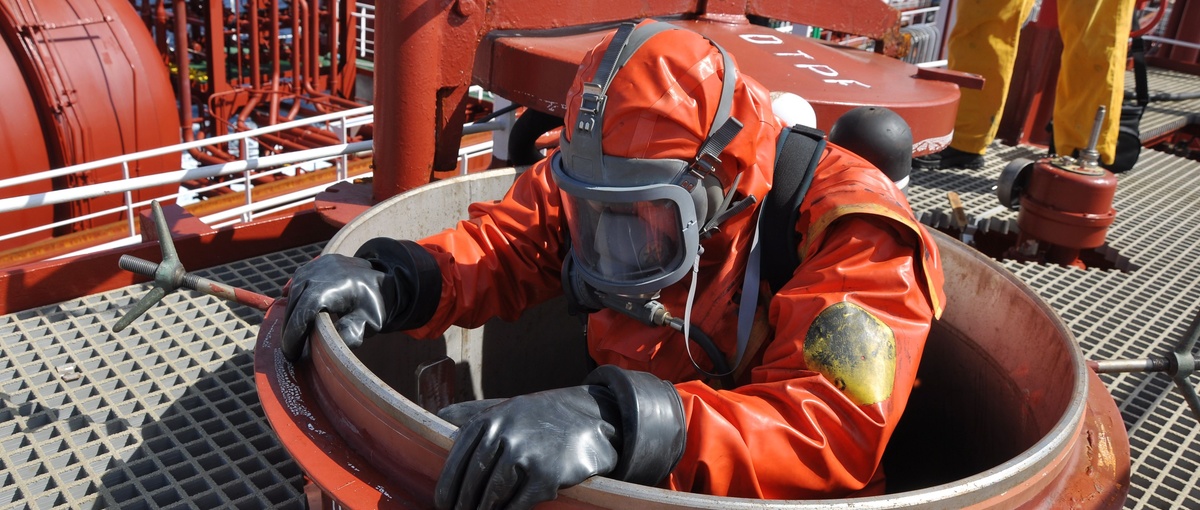The Importance Of Confined Space Training For Your Employees
The Importance Of Confined Space Training For Your Employees
February 20, 2023 |
A confined space is an area large enough for a person to enter but has a small or restricted entrance or exit and isn’t intended for human habitation. Contrary to popular belief, confined spaces aren’t always small. Confined spaces include, but aren’t limited to, silos, sewers, pipelines, hoppers, tanks, boilers, utility vaults, access shafts, water supply towers, aircraft wings, pump stations, manure pits, storage bins, and manholes.
As an employer, you must ensure your staff members receive the necessary training for safety, reducing accidents and fatalities related to working in tight spaces. This article discusses the advantages of confined space training for employees.
Provides Industry-Specific Training
In general, anyone who works in or enters confined areas must recognize hazards and put risk management strategies in place when needed. To improve their knowledge and abilities, those who issue permits for confined space access and create confined space workplaces must complete industry-specific confined space training.
Here are some instances of specific industries that require training for confined spaces:
- Construction: Construction workers often perform confined space work in trenches, crawl spaces, and drainage pipes.
- Mining: Many industries consider the mining sector one of the best examples of working in confined spaces.
- Manufacturing: Working in confined spaces with dangerous chemicals and materials, including sealants, volatile compounds, and plastics, is a requirement of the manufacturing industry.
- Food and Beverage: From time to time, workers in this sector must perform duties in partially or completely enclosed spaces.
Trains Employees’ Emergency Awareness
Your employees won’t recognize the apparent indicators of emergencies in confined spaces if they haven’t received the proper training. Low oxygen levels may result in increased heart rate, rapid breathing, clumsiness, exhaustion, and emotional distress. As oxygen levels drop, symptoms such as nausea, vomiting, dizziness, collapse, seizures or convulsions, and coma develop, which may ultimately result in death.
With proper training, your staff members will be able to recognize signs of very low oxygen levels in themselves and their coworkers. Most importantly, they’ll know what steps to take.
The following are skills that your team members can learn from confined space training:
- Spotting potential risks in constrained or enclosed areas
- Putting risk-control strategies into action
- Selecting, using, testing, storing, and putting on personal protection equipment (PPE)
- Learning more about confined space entry permits
- Learning about emergency action plans
Improves Employees’ Ability to Recognise Potential Hazards
Your employees will learn about potential risks in confined spaces through training. They will then be able to take the appropriate precautions to prevent an accident. Here are a few instances of possible risks in restricted spaces:
Lack of Oxygen
In a small space, oxygen is lost through natural processes. Consider the reactions of various soils with oxygen as an example. Groundwater with chalk or limestone typically produces carbon dioxide, which displaces oxygen. Rust accumulation inside tanks could also be the cause of an oxygen shortage.
Vapors, Gases, and Fumes
Poisonous gases and fumes can quickly accumulate in areas with poor ventilation, such as tight spaces. When a gas pipe leaks or there is contaminated land in a confined space, your employees could be in danger.
Flooding
If your staff members aren’t adequately prepared to handle flooding, they risk becoming buried or trapped inside small places. Particularly during sewer or drainage work, liquids can flood confined spaces, trapping people within and potentially drowning them. Solids can also fill small places, such as in collapsed trenches.
Explosion and Fire Risks
Gases, flammable vapors, dust, and liquids can increase the likelihood of an explosion or fire. The risk increases even more in sites where the crew utilizes equipment that produces sparks or where work can quickly raise temperatures in small spaces.
Dust
Dust can accumulate when working in small areas, such as during drilling and grinding. Wood milling and even woodworking also produce a considerable amount of combustible sawdust. As a result, dust can also cause respiratory issues, especially in low-ventilation areas.
Get Confined Space Training For Your Employees
For their safety, employees should receive confined space training to be able to identify and respond to any hazards that may be present in confined spaces. Making employee safety a top priority and adhering to confined space safety regulations are critical in building a solid reputation for your company.
A reputable safety training and education company can assist you in ensuring your staff members have the necessary training and abilities to execute work in confined spaces. Check out Rescue Solutions’ excellent confined space training program today!
